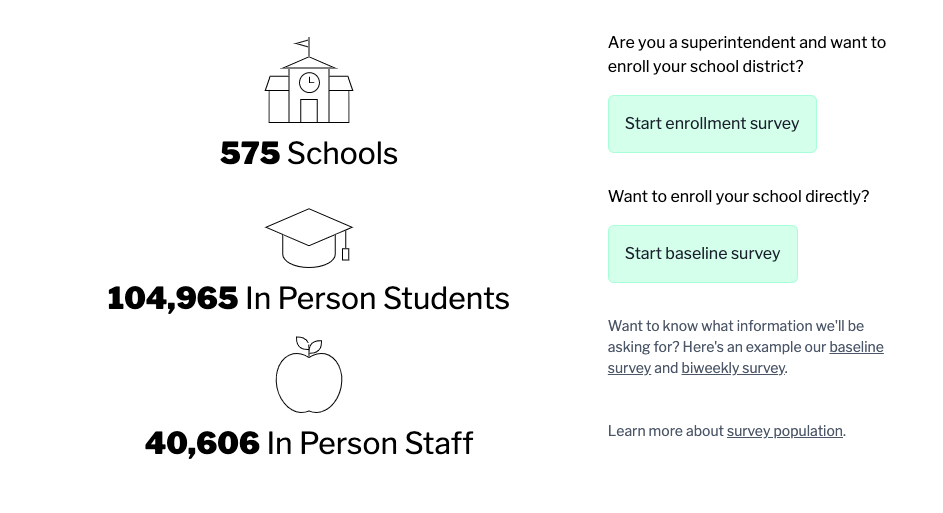The return of in-person instruction at schools in states and communities with low COVID is not leading to outbreaks of the virus, according to a new data dashboard and K-12 observers.
Spread between students and teachers has been rare in nearly 40 in-person and hybrid districts in Connecticut, New York and Pennsylvania being tracked by the Network for Public Education.
“What we haven’t seen yet is any spread that can be attributed to the schools,” says Carol Corbett Burris, the network’s executive director. “A lot of districts are being very responsible and taking this very seriously.”
The network chose a diversity of districts and also assessed safety plans. And while about half have experienced at last one case of COVID, no schools have been shut down thanks, in part, to effective contract tracing, Burris says.
More from DA: 4 promising practices for reopening schools
When two teachers in a Pennsylvania district were diagnosed with COVID, contract tracing revealed they had infected each other while carpooling together, she says. “COVID is happening because people are living their lives,” Burris says. “But what hasn’t happened so far is a case where, for example, someone who’s symptomatic or asymptomatic comes into a class and spreads to other students and teachers.”
School COVID dashboard debuts
A newly launched COVID dashboard with data from nearly 600 schools shows only a tiny number of confirmed cases among in-person K-12 students, with only slightly higher rates for staff.
 The data is giving credence to a growing belief that the risk of transmission in schools is low, as long as administrators require masks, social distancing, smaller classes and other safety precautions, says Emily Oster, an economic professor at Brown University whose on the team that created the dashboard.
The data is giving credence to a growing belief that the risk of transmission in schools is low, as long as administrators require masks, social distancing, smaller classes and other safety precautions, says Emily Oster, an economic professor at Brown University whose on the team that created the dashboard.
Low-transmission rates in surrounding communities also appear to be playing a significant role in low school transmissions, Oster says.
The rate of confirmed COVID cases since classes began is less than one-in-a-1,000 students in the schools that have shared data.
The rate for staff is also relatively small, at about double the number for students, Oster says.
Superintendents and other district leaders are invited to provide their COVID data to the dashboard, and their schools won’t be identified, Oster says.
The dashboard is also collecting data on masks, social distancing and other safety precautions public and private schools are taking. The goal is that this data will help district leaders make decisions as they return to greater degrees of in-person instruction, she says.
More from DA: 3 biggest school maintenance challenges, and solutions, during COVID-19
For instance, some districts have brought staff in to teach remotely to students who remain at home.
With the higher positivity rate among staff members, Oster says schools might consider flipping this model—i.e., bringing students in while teachers stay home.
“We’ve spent a huge amount of time focused on preventing students from infecting each other and teachers,” Oster says. “We also need to focus on how to keep staff from infecting each other, such as closing the staff room.”
The dashboard will be updated regularly as more district share their data.
DA’s coronavirus page offers complete coverage of the impacts on K-12.







